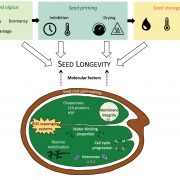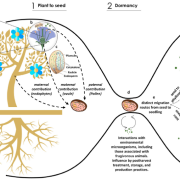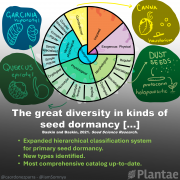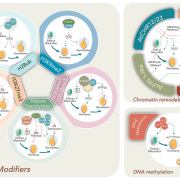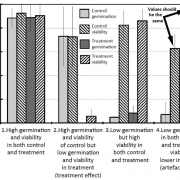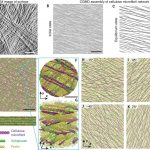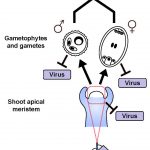Review: Functional packaging of seeds (New Phytol.)
 In this review, Huss and Gierlinger describe the different anatomical features that shape sclerenchyma function in hard seed encapsulations. Hard encapsulations are classified as static (non-deforming at the macroscopic level) or responsive (deforming in response to environmental changes), depending on whether they deform during their life cycle. The properties of these structures depend on sclerenchyma composition and arrangement. Responsive encapsulations are constituted by fibers and are found in fruits that open in response to wetting, drying or heating. These fruits have predetermined breaking points, where tissues and cell walls have reduced thickness or lignification gaps. Their stiffness is shaped by the orientation of cellulose microfibrils, with larger angles between fibrils reducing stiffness. Contrastingly, static encapsulations are found in both fruits and seeds, and their composition is highly variable. For example, the coconut endocarp is formed by fibers and sclereids arranged in different directions, a pattern that provides high toughness. Contrastingly, walnut shells are formed by 3D-puzzled sclereids with varying degrees of lignification. The implications of these different structures in plant evolution and ecology are discussed. (Summary by Carlos A. Ordóñez-Parra @caordonezparra) New Phytol. 10.1111/nph.17299
In this review, Huss and Gierlinger describe the different anatomical features that shape sclerenchyma function in hard seed encapsulations. Hard encapsulations are classified as static (non-deforming at the macroscopic level) or responsive (deforming in response to environmental changes), depending on whether they deform during their life cycle. The properties of these structures depend on sclerenchyma composition and arrangement. Responsive encapsulations are constituted by fibers and are found in fruits that open in response to wetting, drying or heating. These fruits have predetermined breaking points, where tissues and cell walls have reduced thickness or lignification gaps. Their stiffness is shaped by the orientation of cellulose microfibrils, with larger angles between fibrils reducing stiffness. Contrastingly, static encapsulations are found in both fruits and seeds, and their composition is highly variable. For example, the coconut endocarp is formed by fibers and sclereids arranged in different directions, a pattern that provides high toughness. Contrastingly, walnut shells are formed by 3D-puzzled sclereids with varying degrees of lignification. The implications of these different structures in plant evolution and ecology are discussed. (Summary by Carlos A. Ordóñez-Parra @caordonezparra) New Phytol. 10.1111/nph.17299


